When I travel I am always unconsciously on the lookout for the Polish connection. Coming to Pristina, I didn’t have to look very hard. In fact, the very first thing I saw when my plane touched down was… the Polish government’s plane parked on the tarmac next to a giant Luftwaffe aircraft. As it turns out, Poland’s President Bronisław Komorowski just flew in for a one-day visit with Polish troops and police serving in Kosovo as a part of the EULEX mission (ca. 220 soldiers and 120 policemen currently).
Having felt instantly welcomed, I built a better rapport with Pristina than I thought I would. While few visitors fall in love with this city, the negative things I read about it felt rather exaggerated in retrospect. Guidebooks warn about anything from potholes to feral dogs but while indeed street and sidewalk quality leaves much to be desired, Pristina overall felt extremely safe and – at least to me – rather familiar. It could well be anywhere in Central Europe except for more mosques than churches. One big difference is the demographics. As Europe in general ages, Kosovo has extremely young population with 50% of its people under 25 and 70% under 35 years. These statistics can be easily verified by strolling along the all-pedestrian Mother Teresa Boulevard where you mingle with predominantly young, and unexpectedly fashionable, crowd avidly window-shopping and sipping macchiatos in ubiquitous cafes.
Consumer goods are rather expensive given that most of them are imported so not that much actual shopping happens; food – really good food – on the other hand is cheap. I would be remiss not to mention several places where great meals can be procured, all within a short walk from Mother Teresa’s street (but then, most visit-worthy places in Pristina are):- Pishat – reputed to be the best restaurant in town, serves traditional Kosovar dishes;
- Home next to the OSCE building – an atmospheric place with contemporary European cuisine and local specials, frequented by expats;
- Tiffany’s – finding it is half the challenge given that the restaurant is in an unmarked building off a side street but it’s well worth the search.
Pristina’s youthful population is a great thing from a visitor’s perspective due to a key linguistic advantage it represents. The only Albanian word I managed to master is faleminderit (thank you) but fortunately I wasn’t doomed thanks to all those nice youths. While Albanian doesn’t have much in common with any of the languages I know, rendering my communication capabilities near zero, most young people – and many older ones too – speak at least some English and many know it fluently after years of studying or working abroad, or being refugees during the 1999 war.
The memory of the war itself is not apparent in the city, which chooses to highlight its newly won 2008 independence over the scars from a decade plus ago. The Newborn sign, covered in celebratory signatures, commemorates February 17, 2008 Independence Day. A large-scale portrait of Ibrahim Rugova draped on the side of a building calmly looks on the passing crowds. In fact, the war is more evident in what’s no longer here than what is. No shop or street signs in Cyrillic (in fact, very few street signs or building numbers at all, given the name changes and rampant illegal construction in recent years), no Serbian heard on the street, a few empty Orthodox churches. Notably, the unfinished and unused Christ the Savior Cathedral, started in 1995 but never completed, slowly decays, its entrances blocked by barbed wire. If Pristina once was a multiethnic city, it is not so much anymore given that most of the Serbian population fled in fear of Albanian reprisals for the war-time atrocities.As journalist Tim Judah points out in his book Kosovo: War and Revenge, seeking answers to what led to that conflict – and whether we’ve seen the last of it – can be highly elusive. The causes remain tangled in troubled history going back centuries to Serbian defeat by the Ottomans in 1389 at Kosovo Polje on the outskirts of Pristina, or as recent as the last two decades ago when then-President of Yugoslavia Slobodan Milošević revoked Kosovo’s autonomy in 1989 and triggered the chain reaction that finally exploded in 1999. The core issue comes down to the same theme we see playing out in similar conflicts in different parts of the world, from Israel and Palestine to Northern Ireland: same piece of land, two conflicting claims to it. It’s the contradiction between self-determination and historical possession. It’s two rights clashing to produce one enduring, repeated, and self-propelling wrong.
Judah sums up the essence of the dispute this way,
“The classical Serbian view holds that the people who lived in Kosovo were overwhelmingly Serb until barely a few generations back. If this were true, then the modern Serbian claims to the land would be that much stronger. On the other hand, Albanian historians have always claimed the rights of ‘first possession.’ They argue that their ancestors, the ancient Illyrians and Dardanians, lived here long before the Slav invasions of the sixth and seventh centuries [and Albanians now account for the majority of Kosovo’s population]. In fact, the truth is unclear. As always in the Balkans, and elsewhere for that matter, the truth is not what matters, it is what people believe it to be.”
As far as the overall look of the city today, it wasn’t the recent war so much as prior decades under communism that did the damage. In 1946, Pristina became the capital of the Socialist Autonomous Region of Kosovo – with all the architectural curses that this entailed. The National Public Library is probably the best known evidence of it. A truly bizarro structure in the middle of the University of Pristina campus at first seems like a strange art project until you realize it’s for real. Apparently when the building was unveiled in 1982 one of the officials present said, “OK now let’s see it without the scaffolding” not realizing that the metal fishing net wrapped around the exterior was a part of the design.
Then there is the statue of President Bill Clinton on the street that bears his name. I guess he always liked the spotlight =) To complete the all-American vibe, across the street there is Cheers Pristina-style right across the street (i.e. Bill Clinton Boulevard). If there ever was a place where America has lots of devoted fans, Kosovo is it even if relatively few Americans have even a vague idea where it is… Pristina seems somewhat unreal. On the one hand, it’s utterly normal with all the trappings of a European city like any other. On the other hand, it is the capital of a strange state whose existence is protected by NATO troops and not universally recognized. It crucially remains unrecognized by its biggest neighbor and by the Serbian population within its borders. In fact, Serbia plans to extend its upcoming elections to Kosovo on May 6 – a largely symbolic but controversial gesture of yet unknown consequences. As I said before, I don’t feel like I have good enough grip of the ultra-complex Balkan history (but who really does?) to comment meaningfully on the subject of what happened here in the last two decades. As long as it doesn’t happen again…
Read on:

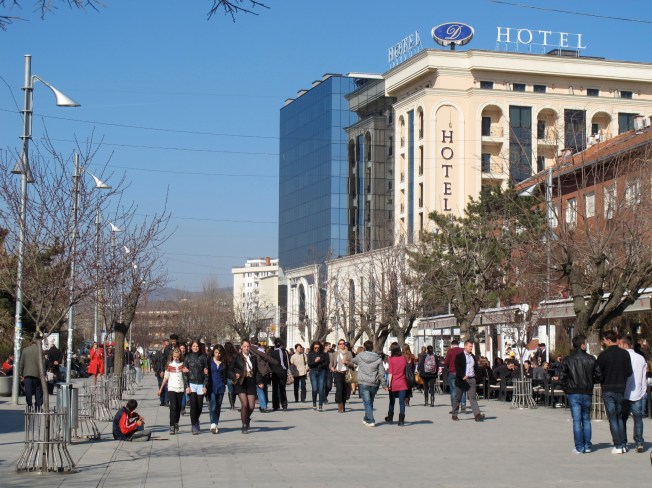




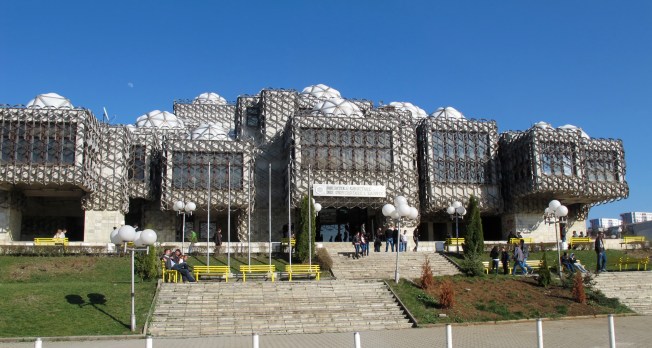
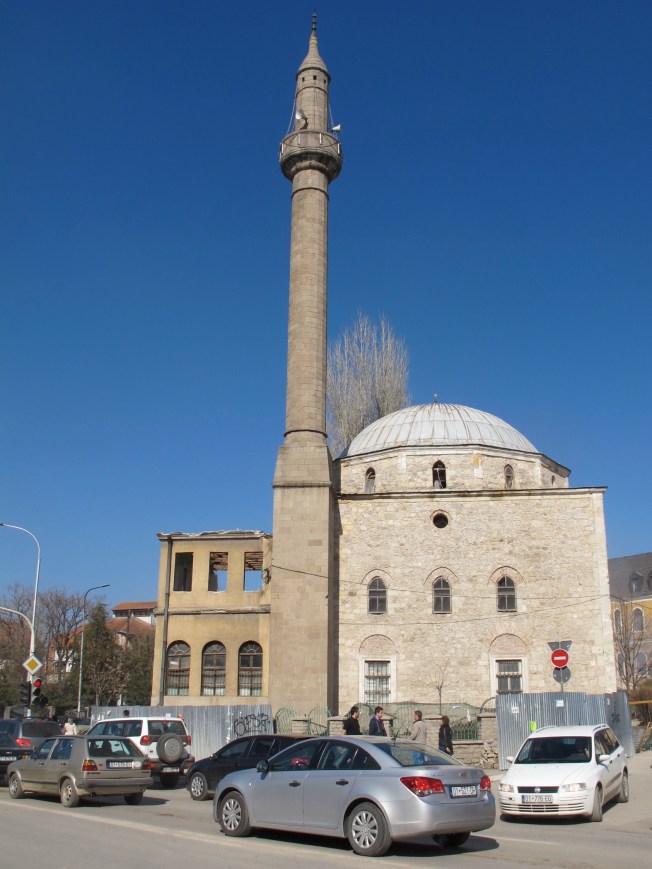
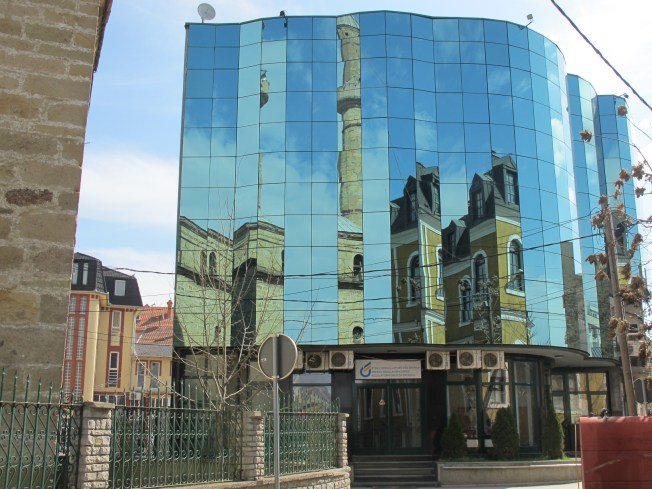
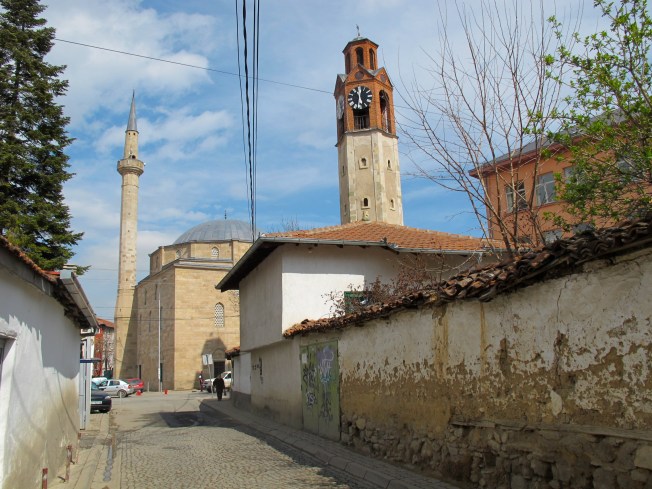
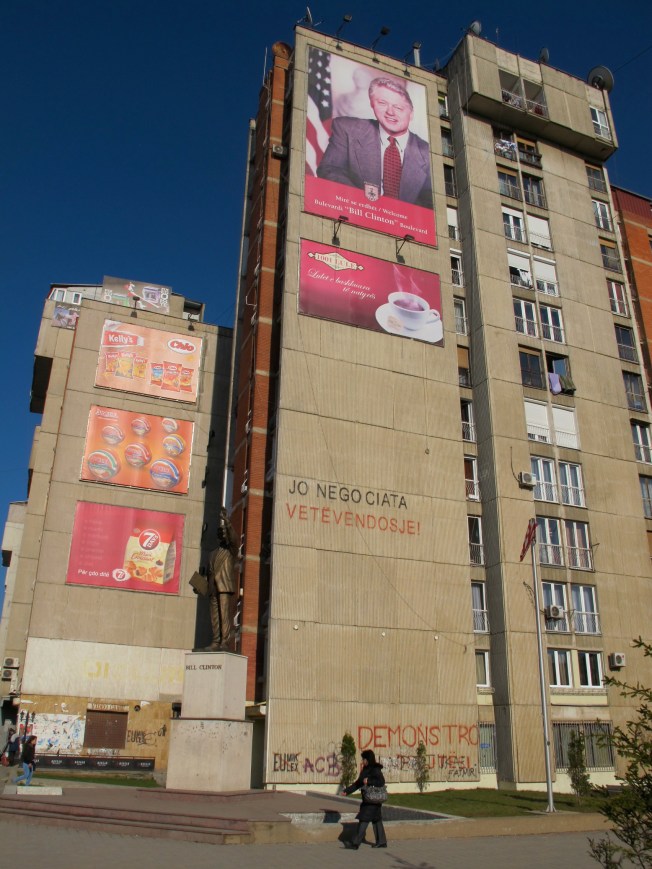
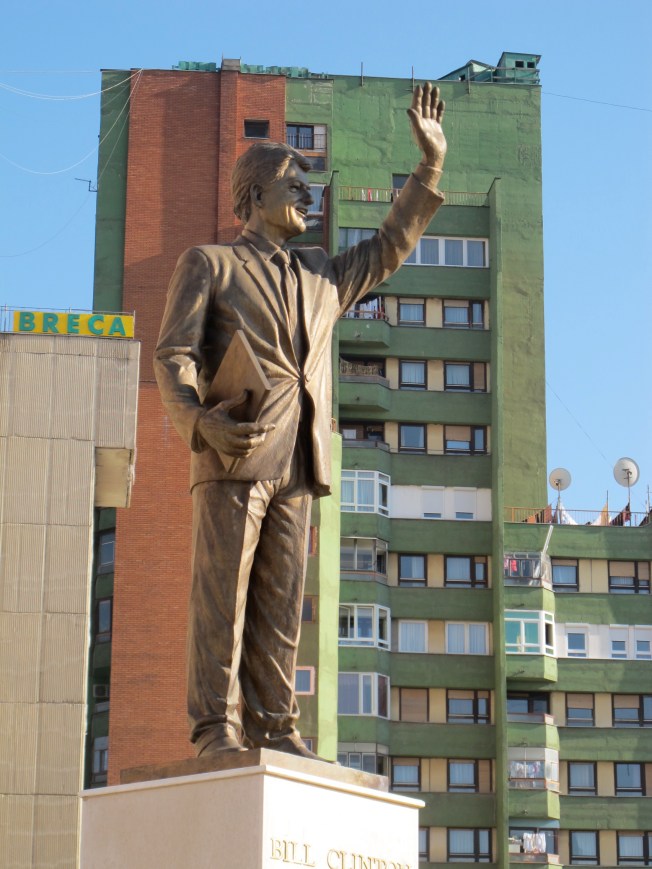

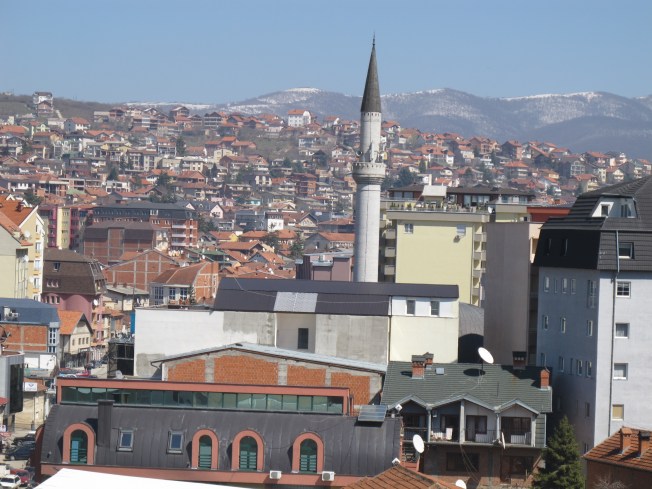

Interesting post – I enjoyed reading it. Really like that reflection picture.
Thanks! The reflections were my favorite angles on Pristina! There are two building like this (one of them being the Parliament) where you get great reflections of the mosques.
It’s the contradiction between self-determination and historical possession.— This sentence does not reflect the truth. Except for the self-determination, Albanians lived always in Kosovo while Serbs conquered the territory and possessed it for 2 centuries in Middle Ages and 86 (1913-1999) years of XX century ( See: Noel Malkolm-Kosovo, short history). So, in the whole history, since they came in Balkans, they lived there for less than 300 hundred years. Saying this, I do not mean they should not live in Kosovo, I just wanted to explain that saying that situation shows the contradiction of self-determination (Albanians) and historical possession ( meaning Serbs) is not right, because historically Albanians always lived there. I would say it is more a fight for expanding territories ( see: Vaso Cubrilovic- Expulsion of Albanians, a Memorandum written 100 years ago from Serbian Academy of Science. It is in English if you google it).
“Saying this, I do not mean they should not live in Kosovo, I just wanted to explain that saying that situation shows the contradiction of self-determination (Albanians) and historical possession (meaning Serbs) is not right, because historically Albanians always lived there.”
Thank you for your comment but you misunderstood my point and added your own interpretation in the sentence above. I am not attributing the claim of self-determination or historical possession exclusively to either group because both have made claims on both grounds, depending on which group and which point in history you’re talking about. But more importantly, this blog is not meant to pass any judgments on “right” and “truth” – I thought I was clear about that. It’s about Pristina in my subjective experience of the city (which I liked quite a lot by the way), nothing more.
Great post! You write very well, weaving in historical background in such a way that the city comes alive. I’m also guilty of searching for the Polish connection wherever I go, so I understand you 😉
I didn’t even have to search in this case =)
I can’t believe you were able to say “faleminderit.” The Bill Clinton statue seems very surreal. Thanks for the introduction to Pristina.
Glad you enjoyed it!
Pingback: Prizren – waiting for a rainbow « Sandstone and amber
Ania, another great post. In addition to the “restorans” you suggested two more traditional Albanian food places you shouldn’t miss are Renaissance II and Liburnia. Both are well hidden and off the beaten path but both are excellent. When you’re in Pristina ask any local and they will know where they are (you can also find directions online). One thing I do miss about Kosovo is the food.
Great, thank you so much for the recommendations!